CONTENTS
- Community forest rights
- National Policy for Rare Diseases
- Kudankulam Nuclear Power Plant
- Nuclear fusion reaction
- Geminids meteor shower
- Zika Virus
Community Forest Rights
Context:
Over 15 years after the Forest Rights Act (FRA), 2006 came into effect, 13 tribal settlements from Pilloor and Palamalai forest areas in Coimbatore district were recently accorded Community Forest Rights (CFR) after the forest areas they dwell and collect minor produces from for generations were mapped using GPS-based land survey.
Relevance:
GS III- Environment and Ecology
Dimensions of the Article:
- What is a community forest resource?
- What are Community Forest Resource rights?
- Why is the recognition of CFR rights important?
- Forest Rights Act, 2006
What is a community forest resource?
- The community forest resource area is the common forest land that has been traditionally protected and conserved for sustainable use by a particular community.
- The community uses it to access resources available within the traditional and customary boundary of the village; and for seasonal use of landscape in case of pastoralist communities.
- Each CFR area has a customary boundary with identifiable landmarks recognised by the community and its neighboring villages.
- It may include forest of any category – revenue forest, classified & unclassified forest, deemed forest, DLC land, reserve forest, protected forest, sanctuary and national parks etc.
What are Community Forest Resource rights?
- The Community Forest Resource rights under Section 3(1)(i) of the Scheduled Tribes and Other Traditional Forest Dwellers (Recognition of Forest Rights) Act (commonly referred to as the Forest Rights Act or the FRA) provide for recognition of the right to “protect, regenerate or conserve or manage” the community forest resource.
- These rights allow the community to formulate rules for forest use by itself and others and thereby discharge its responsibilities under Section 5 of the FRA.
- CFR rights, along with Community Rights (CRs) under Sections 3(1)(b) and 3(1)(c), which include nistar rights and rights over non-timber forest products, ensure sustainable livelihoods of the community.
- These rights give the authority to the Gram Sabha to adopt local traditional practices of forest conservation and management within the community forest resource boundary.
Why is the recognition of CFR rights important?
- Aimed at undoing the “historic injustice” meted out to forest-dependent communities due to curtailment of their customary rights over forests.
- It is important as it recognises the community’s right to use, manage and conserve forest resources, and to legally hold forest land that these communities have used for cultivation and residence.
- It also underlines the integral role that forest dwellers play in sustainability of forests and in conservation of biodiversity.
- It is of greater significance inside protected forests like national parks, sanctuaries and tiger reserves as traditional dwellers then become a part of management of the protected forests using their traditional wisdom.
- But while CFR rights are an important empowerment tool, getting a consensus amongst various villages about their traditional boundaries often proves a challenge.
Forest Rights Act, 2006
- Schedule Tribes and Other Forest Dwellers Act or Recognition of Forest Rights Act came into force in 2006.
- The Nodal Ministry for the Act is Ministry of Tribal Affairs.
- It has been enacted to recognize and vest the forest rights and occupation of forest land in forest dwelling Scheduled Tribes and other traditional forest dwellers, who have been residing in such forests for generations, but whose rights could not be recorded.
- This Act not only recognizes the rights to hold and live in the forest land under the individual or common occupation for habitation or for self-cultivation for livelihood, but also grants several other rights to ensure their control over forest resources.
- The Act also provides for diversion of forest land for public utility facilities managed by the Government, such as schools, dispensaries, fair price shops, electricity and telecommunication lines, water tanks, etc. with the recommendation of Gram Sabhas.
- Rights under the Forest Right Act 2006:
- Title Rights- ownership of land being framed by Gram Sabha.
- Forest management rights– to protect forests and wildlife.
- Use rights- for minor forest produce, grazing, etc.
- Rehabilitation– in case of illegal eviction or forced displacement.
- Development Rights– to have basic amenities such as health, education, etc.
-Source: The Hindu
National Policy For Rare Diseases
Context:
Recently, a Rajya Sabha Member of Parliament (MP) raised concerns over National Policy of Rare Diseases (NPRD) as it did not reach any patient with rare diseases even after several months since its introduction.
Relevance:
GS-II: Social Justice (Health related issues, Governance and Government Policies, Issues Arising Out of Design & Implementation of Policies)
Dimensions of the Article:
- What are ‘Rare diseases’?
- Pressing Issues regarding ‘Rare diseases’
- Provisions of the National Rare Disease Policy 2021
- Criticisms of the National Rare Disease Policy 2021
- Constitutional Provisions in the context of the new policy for rare diseases
What are ‘Rare diseases’?
A rare disease, also referred to as an orphan disease, is any disease that affects a small percentage of the population.
Most rare diseases are genetic, and are present throughout a person’s entire life, even if symptoms do not immediately appear.
- Haemophilia,
- Thalassemia,
- Sickle-cell anaemia,
- Auto-immune diseases,
- Pompe disease,
- Hirschsprung disease,
- Gaucher’s disease,
- Cystic Fibrosis,
- Hemangiomas and
- Certain forms of muscular dystrophies
Are some of the most common rare diseases recorded in India.
Pressing Issues regarding ‘Rare diseases’
- Rare diseases pose a significant challenge to health care systems because of the difficulty in collecting epidemiological data, which in turn impedes the process of arriving at a disease burden, calculating cost estimations and making correct and timely diagnoses, among other problems.
- There are 7,000-8,000 classified rare diseases, but less than 5% have therapies available to treat them.
- About 95% rare diseases have no approved treatment and less than 1 in 10 patients receive disease-specific treatment. Where drugs are available, they are prohibitively expensive, placing immense strain on resources.
- These diseases have differing definitions in various countries and range from those that are prevalent in 1 in 10,000 of the population to 6 per 10,000.
- India has said it lacks epidemiological data on the prevalence here and hence has only classified certain diseases as ‘rare.’
- Currently, only a few pharmaceutical companies are manufacturing drugs for rare diseases globally and there are no domestic manufacturers in India except for those who make medical-grade food for those with metabolic disorders.
- Due to the high cost of most therapies, the government has not been able to provide these for free.
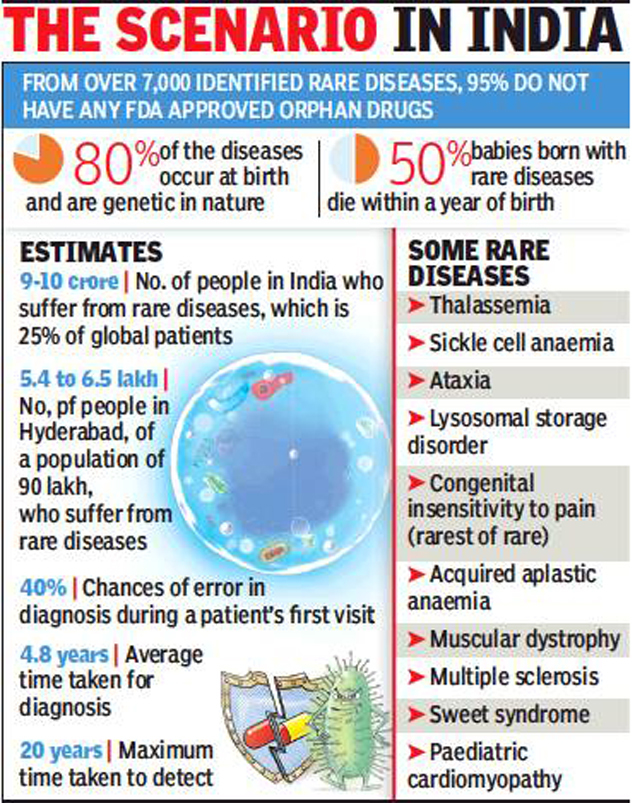
Provisions of the National Rare Disease Policy 2021
- Patients of rare diseases will be eligible for a one-tome treatment under the Ayushman Bharat Pradhan Mantri Jan Arogya Yojana (AB-PMJAY).
- Financial support up to Rs20 lakh under the Umbrella Scheme of Rashtriya Arogaya Nidhi shall be provided by the central government for treatment of those rare diseases that require a one-time treatment (diseases listed under Group 1) for their treatment in Government tertiary hospitals only. – (NOT be limited to below poverty line (BPL) families, but extended to about 40% of the population as eligible under the norms of Pradhan Mantri Jan Arogya Yojana (PMJAY))
The policy has categorised rare diseases in three groups:
- Disorders amenable to one-time curative treatment;
- Those requiring long term or lifelong treatment; and
- Diseases for which definitive treatment is available but challenges are to make optimal patient selection for benefit.
The government has said that it will also assist in voluntary crowd-funding for treatment as it will be difficult to fully finance treatment of high-cost rare diseases.
Criticisms of the National Rare Disease Policy 2021
- Though the document specifies increasing the government support for treating patients with a ‘rare disease’— from Rs 15 lakh to Rs 20 lakh — caregivers say this doesn’t reflect actual costs of treatment.
- The Policy leaves patients with Group 3 rare diseases to fend for themselves due to the absence of a sustainable funding support.
- What the policy doesn’t capture is that these are diseases that last a lifetime adding up to a huge amount of expenditure and many of the patients who can’t afford such treatment will be unable to even make it to the prescribed tertiary hospitals for treatment.
Constitutional Provisions in the context of the new policy for rare diseases
- Article 38 says that the state will secure a social order for the promotion of welfare of the people. Providing affordable healthcare is one of the ways to promote welfare.
- Article 41 imposes duty on state to provide public assistance in cases of unemployment, old age, sickness and disablement etc.
- Article 47 makes it the duty of the State to improve public health, securing of justice, human condition of works, extension of sickness, old age, disablement and maternity benefits and also contemplated.
-Source: The Hindu
Kudankulam Nuclear Power Plant
Context:
Critical component for Kudankulam nuclear reactor tested successfully.
Relevance:
GS-III: Industry and Infrastructure
Dimensions of the Article:
- Kudankulam Nuclear Power Plant
- Nuclear power by country
- Nuclear Power Plants in India
- India’s Nuclear Energy Program: Three-Stage Programme
Kudankulam Nuclear Power Plant
- KKNPP is the single largest nuclear power station in India.
- It is situated in Koodankulam in the Tirunelveli district of Tamil Nadu.
- It is scheduled to have six VVER-1000 reactors with an installed capacity of 6,000 MW of electricity.
- It has been built in collaboration with Atomstroyexport, the Russian state company and NPCIL.
Nuclear power by country
- Nuclear power plants currently operate in 30 countries.
- Most are in Europe, North America, East Asia and South Asia.
- The United States is the largest producer of nuclear power, while France has the largest share of electricity generated by nuclear power.
- France, Slovakia, Ukraine, and Hungary use them as the source for a majority of the country’s electricity supply as of 2019.
- China has the fastest growing nuclear power program with 11 new reactors under construction, and a considerable number of new reactors are also being built in India, Russia and South Korea.
- Pakistan plans on constructing three to four nuclear power plants by 2030.
- At the same time, at least 100 older and smaller reactors will “most probably be closed over the next 10–15 years”.
- Some countries operated nuclear reactors in the past but have currently no operating nuclear plants.
- Among them, Italy closed all of its nuclear stations by 1990 and nuclear power has since been discontinued because of the 1987 referendums on which Italians voted.
- Several countries are currently operating nuclear power plants but are planning a nuclear power phase-out.
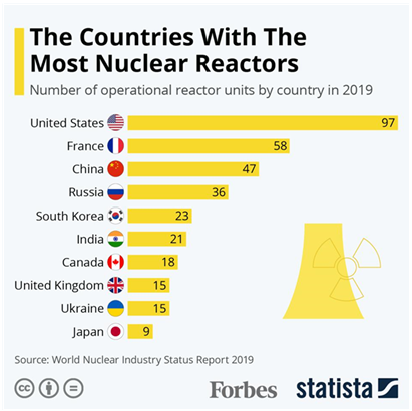
Nuclear Power Plants in India
- Presently, India has 22 operating nuclear power reactors, with an installed capacity of 6780 MegaWatt electric (MWe). Among these eighteen reactors are Pressurised Heavy Water Reactors (PHWRs) and four are Light Water Reactors (LWRs).
- Nuclear Power is the fifth-largest source of generating electricity in India after coal, gas, wind power, and hydroelectricity.
- The domestic uranium reserve in India is small and the country is dependent on uranium imports from other countries to provide fuel to its nuclear power industry. Since the 1990s, Russia has been a major supplier of nuclear fuel to India.
- The nuclear energy programme in India was launched around the time of independence under the leadership of Homi J Bhabha.
- Prototype Fast Breeder Reactor (PFBR) is being implemented by the Bharatiya Nabhikiya Vidyut Nigam Limited (BHAVINI), a wholly owned Enterprise of the Government of India under the administrative control of the Department of Atomic Energy (DAE).
India’s Nuclear Energy Program: Three-Stage Programme
Stage one
- Pressurized Heavy Water Reactor uses Natural UO2 as fuel matrix, Heavy water as moderator and coolant.
- In the reactor, the first two plants were of boiling water reactors based on imported technology.
- Subsequent plants are of PHWR type through indigenous R&D efforts.
- India achieved complete self- reliance in this technology and this stage of the programme is in the industrial domain.
- The future plan includes the setting up of VVER type i.e. Russian version of the Pressurized Water Reactor (PWR) is under progress to augment power generation.
- MOX fuel (Mixed oxide) is developed and introduced at Tarapur to conserve fuel and to develop new fuel technology.
Second stage
- Second stage of nuclear power generation envisages the use of Pu-239 obtained from the first stage reactor operation, as the fuel core in fast breeder reactors (FBR).
Third stage
- Third phase of India’s Nuclear Power Generation programme is, breeder reactors using U-233 fuel.
- India’s vast thorium deposits permit design and operation of U-233 fueled breeder reactors.
-Source: The Hindu
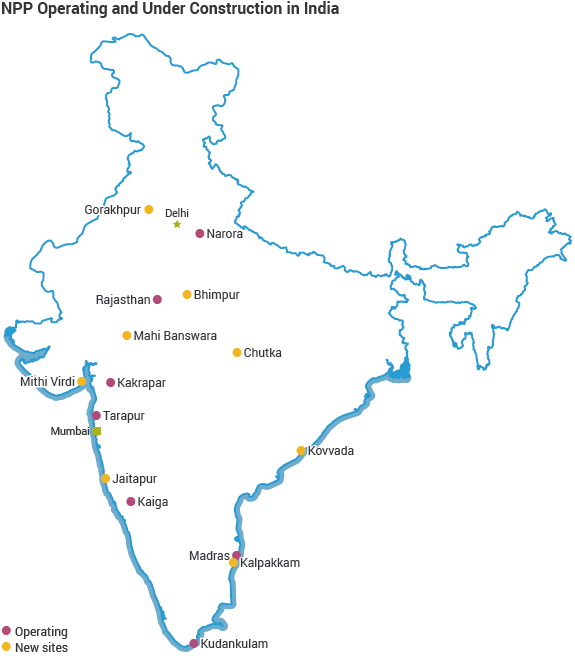
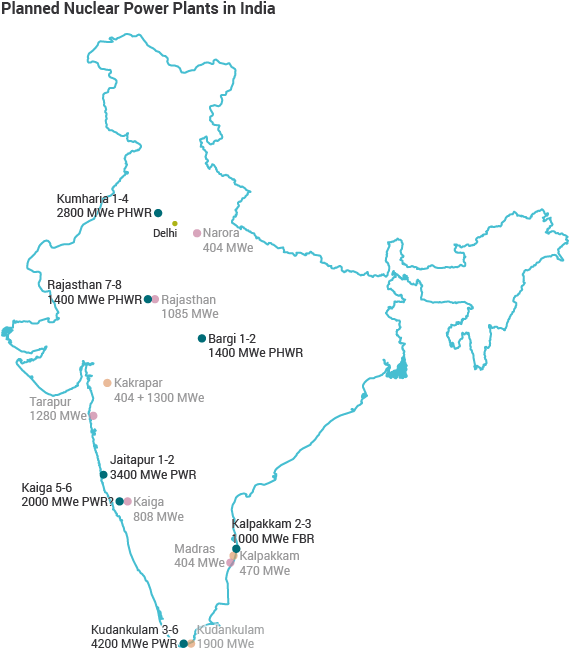
Nuclear Fusion Reaction
Context:
Scientists in the United States have, for the first time, achieved a net gain in energy from a nuclear fusion reaction, seen as a big step forward in the decades-old endeavour to master a technology that is considered the most dependable source of energy in future.
Relevance:
Prelims, GS-III: Science and Technology (Nuclear Technology)
Dimensions of the Article:
- Nuclear Fusion
- Advantages of Nuclear Fusion
- About the Fusion Ignition experiment in the U.S.
About Net Energy gain:
- Researchers at the Lawrence Livermore National Laboratory in California for the first time produced more energy in a fusion reaction than was used to ignite it, something called net energy gain.
- The achievement will pave the way for advancements in national defense and the future of clean power.
- This is a landmark achievement for the researchers and staff at the National Ignition Facility who have dedicated their careers to seeing fusion ignition become a reality, and this milestone will undoubtedly spark even more discovery
Nuclear Fusion
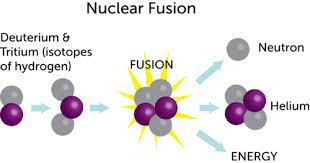
- Nuclear Fusion is defined as the combining of two lighter nuclei into a heavier one.
- Such nuclear fusion reactions are the source of energy in the Sun and other stars.
- It takes considerable energy to force the nuclei to fuse. The conditions needed for this process are extreme – millions of degrees of temperature and millions of pascals of pressure.
- The hydrogen bomb is based on a thermonuclear fusion reaction. However, a nuclear bomb based on the fission of uranium or plutonium is placed at the core of the hydrogen bomb to provide initial energy.
Advantages of Nuclear Fusion
- Fusing atoms together in a controlled way releases nearly four million times more energy than a chemical reaction such as the burning of coal, oil or gas and four times as much as nuclear fission reactions (at equal mass).
- Fusion has the potential to provide the kind of baseload energy needed to provide electricity to the cities and the industries.
- Fusion fuels are widely available and nearly inexhaustible. Deuterium can be distilled from all forms of water, while tritium will be produced during the fusion reaction as fusion neutrons interact with lithium.
- Fusion doesn’t emit harmful toxins like carbon dioxide or other greenhouse gases into the atmosphere. Its major by-product is helium: an inert, non-toxic gas.
- Nuclear fusion reactors produce no high activity, long-lived nuclear waste.
- Fusion doesn’t employ fissile materials like uranium and plutonium (Radioactive tritium is neither a fissile nor a fissionable material).
- It is difficult enough to reach and maintain the precise conditions necessary for fusion—if any disturbance occurs, the plasma cools within seconds and the reaction stops.
About the Nuclear Fusion Ignition experiment in the U.S.
- The U.S. researchers applied laser energy on fuel pellets to heat and pressurise them at conditions similar to that at the centre of our Sun which triggered the fusion reactions.
- These reactions released positively charged particles called alpha particles (helium), which in turn heated the surrounding plasma.
- The heated plasma also released alpha particles and a self-sustaining reaction called ignition took place.
- Ignition helps amplify the energy output from the nuclear fusion reaction and this could help provide clean energy for the future.
- Reproducing the conditions at the centre of the Sun will allow studying:
- Plasma, the state of matter that has never been created in the lab before.
- Gain insights into quantum states of matter.
- Conditions closer and closer to the beginning of the Big Bang.
-Source: Indian Express
Geminids Meteor Shower
Context:
It is that time of the year when the universe puts up its easiest-to-view meteor shower, the Geminids.
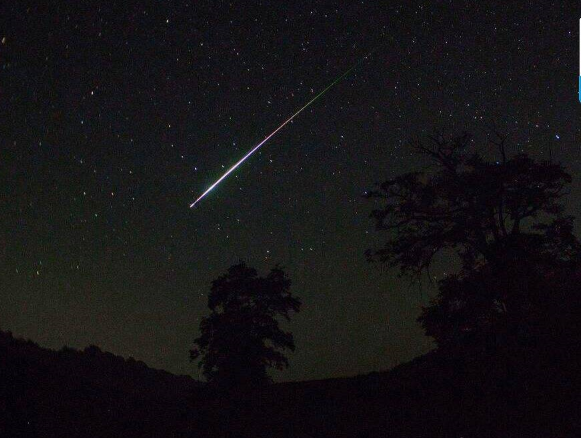
Relevance:
GS I: Geography
Dimensions of the Article:
- What causes meteor showers?
- What makes the Geminids unique?
- Why are they called Geminids?
What causes meteor showers?
- Meteors are usually fragments of comets. As they enter the Earth’s atmosphere at high speed, they burn up, creating a spectacular “shower”.
- According to NASA, “Meteors come from leftover comet particles and bits from asteroids. When these objects come around the Sun, they leave a dusty trail behind them. Every year Earth passes through these debris trails, which allows the bits to collide with our atmosphere where they disintegrate to create fiery and colorful streaks in the sky.”
What makes the Geminids unique?
- NASA describes the Geminids as “one of the best and most reliable annual meteor showers”.
- If their peak coincides with the new moon, and if the weather is clear, the Geminids can produce approximately 100-150 meteors per hour for viewing.
- This year however, the moon is bright, and so only 30-40 meteors per hour will be visible in the Northern Hemisphere.
- But the Geminids are so bright that this should still be a good show
- The Geminids are unique because unlike most meteor showers, they originate not from a comet, but from an asteroid, the 3200 Phaethon.
3200 Phaethon:
- The 3200 Phaethon was discovered on October 11, 1983.
- It is named after the Greek mythology character Phaethon, son of the Sun God Helios.
- It takes 1.4 years to complete one round of the Sun.
- As the 3200 Phaethon moves close to the Sun while orbiting it, the rocks on its surface heat up and break off. When the Earth passes through the trail of this debris, the Geminids are caused.
Why are they called Geminids?
- That comes from the constellation Gemini, from whose location in the sky the meteor shower appears to originate.
- The constellation for which a meteor shower is named only serves to aid viewers in determining which shower they are viewing on a given night.
- The constellation is not the source of the meteors.
- Also, you should not look only to the constellation of Gemini to view the Geminids – they are visible throughout the night sky.
-Source: Indian Express
Zika Virus Disease
Context:
Following the detection of the first case of Zika virus in Karnataka, the State Health Department has intensified containment measures to prevent further spread of the vector-borne disease.
Relevance:
GS II- Health
About Zika Virus Disease:
- Zika virus is a mosquito-borne flavivirus that was first identified in Uganda in 1947 in monkeys. It was later identified in humans in 1952 in Uganda and the United Republic of Tanzania.
- ZVD is caused by a virus transmitted primarily by Aedes mosquitoes (AM), mainly Aedes aegypti.
- This is the same mosquito that transmits dengue, chikungunya and yellow fever.
- Zika virus is also transmitted from mother to fetus during pregnancy, through sexual contact, transfusion of blood and blood products, and organ transplantation.
- Symptoms are generally mild and include fever, rash, conjunctivitis, muscle and joint pain, malaise or headache. Most people with Zika virus infection do not develop symptoms.
- Zika virus infection during pregnancy can cause infants to be born with microcephaly (smaller than normal head size) and other congenital malformations, known as congenital Zika syndrome.
- There is no vaccine or medicine for Zika. Instead, the focus is on relieving symptoms and includes rest, rehydration and acetaminophen for fever and pain.
-Source: The Hindu





